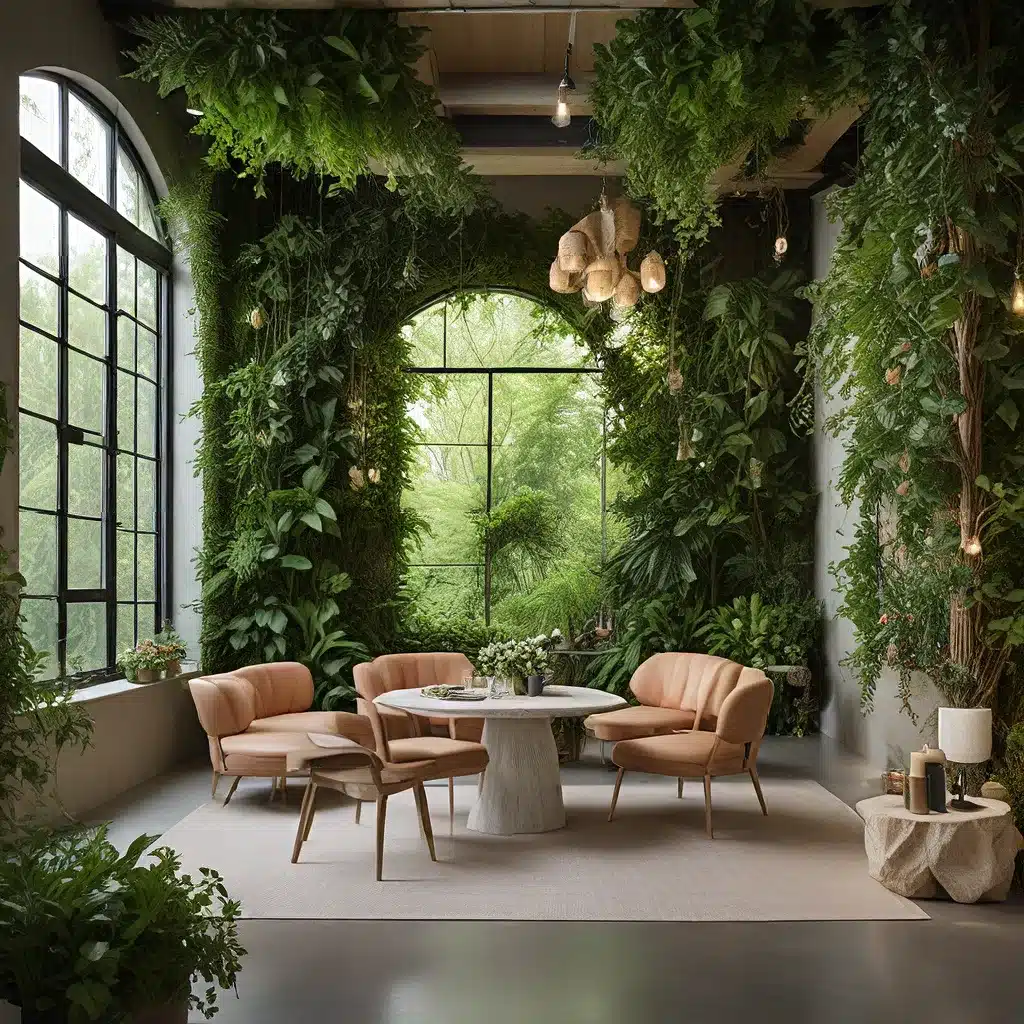
In the ever-evolving world of interior design, trends come and go, but one approach has consistently captured the hearts and minds of design enthusiasts and homeowners alike: biophilic design. This harmonious integration of natural elements into our built environments promises not only breathtaking aesthetics but also a profound impact on our well-being and overall quality of life.
Embracing the Biophilic Ethos
At its core, biophilic design is rooted in the innate human affinity for the natural world, a concept first introduced by renowned psychologist Edward O. Wilson. This “love of life” is hardwired into our DNA, a remnant of our evolutionary past when we thrived in the great outdoors. In the hustle and bustle of modern life, reconnecting with nature has become more crucial than ever, and biophilic design offers a way to do just that.
By strategically incorporating natural materials, textures, and forms into our homes, we can create spaces that not only nourish the senses but also soothe the mind and body. From lush indoor gardens to cascading water features, biophilic design blurs the boundaries between the natural and the built, inviting the beauty of the outdoors to permeate our everyday living environments.
Maximizing Natural Light
One of the fundamental principles of biophilic design is the maximization of natural light. Sunlight not only illuminates our spaces but also has a profound impact on our mood, productivity, and overall well-being. When designing or renovating a home, it’s essential to consider the placement of windows, skylights, and glass doors that can flood the interior with natural illumination.
By embracing minimal window treatments, you can further enhance the connection between the indoors and the outdoors, allowing the beauty of the surrounding landscape to become an integral part of your living experience. This seamless integration of natural light can have a calming and rejuvenating effect, helping to alleviate stress and improve overall well-being.
Cultivating Indoor Gardens
Another hallmark of biophilic design is the incorporation of lush, verdant greenery into our living spaces. From small herb gardens in the kitchen to sprawling vertical green walls in the living room, indoor gardens have the power to transform a space, adding visual interest and improving air quality.
When selecting plants for your biophilic sanctuary, consider a mix of low-maintenance houseplants and aromatic herbs that can thrive year-round. Strategically placing these natural elements throughout your home can create a sense of tranquility and harmony, seamlessly blending the indoors with the great outdoors.
Blurring the Boundaries
Biophilic design is all about blurring the boundaries between the interior and exterior. By installing large sliding glass doors or creating an indoor-outdoor living room, you can establish a seamless transition between these two realms, enhancing the overall flow and connectivity of your home.
This sense of fluidity and continuity can have a profound impact on the way we perceive and experience our living spaces. The dissolution of the divide between the natural and the built creates a calming and rejuvenating atmosphere, allowing us to fully immerse ourselves in the beauty of our surroundings.
Embracing Biophilic Decor
Incorporating biophilic design principles into your home doesn’t have to be a daunting task. Small, thoughtful additions can make a significant impact, transforming your living spaces into sanctuaries that nourish the mind, body, and soul.
Consider swapping out your standard throw blankets for ones that evoke the colors, patterns, or textures of nature, or invest in nature-inspired wallpaper to add a touch of the outdoors to a frequently used room. Even simple swaps to natural materials, such as stone coasters or wood cutting boards, can contribute to the overall biophilic aesthetic.
For those seeking a more comprehensive biophilic transformation, working with a professional interior designer can be invaluable. These experts can help you orchestrate a cohesive design that seamlessly integrates natural elements, maximizes natural light, and creates a harmonious, restorative living environment.
The Benefits of Biophilic Design
The allure of biophilic design goes beyond mere aesthetic appeal. Numerous studies have linked exposure to natural elements with a wide range of physical and psychological benefits, including:
- Lower blood pressure and stress levels
- Reduced feelings of anxiety and depression
- Improved cognitive function and focus
- Enhanced ability to recover from illness or injury
- Increased productivity and overall well-being
By creating spaces that foster a deep connection with nature, biophilic design has the power to transform our living experiences, promoting a healthier, happier, and more balanced lifestyle.
Bringing Biophilic Beauty to Your Home
Whether you’re designing a new home or refreshing an existing space, the principles of biophilic design offer endless possibilities for creating restorative, nature-infused sanctuaries. By strategically incorporating natural elements, maximizing natural light, and blurring the boundaries between indoors and out, you can cultivate a haven that nourishes the soul and enhances your overall quality of life.
As you embark on your biophilic design journey, remember that every small step towards reconnecting with nature can have a profound impact. So, let your inner urban grace shine through, and embrace the beauty of the great outdoors by bringing it into the heart of your home. Visit urbangraceinteriorsinc.com to explore how our team of skilled designers can help you create the biophilic sanctuary of your dreams.

